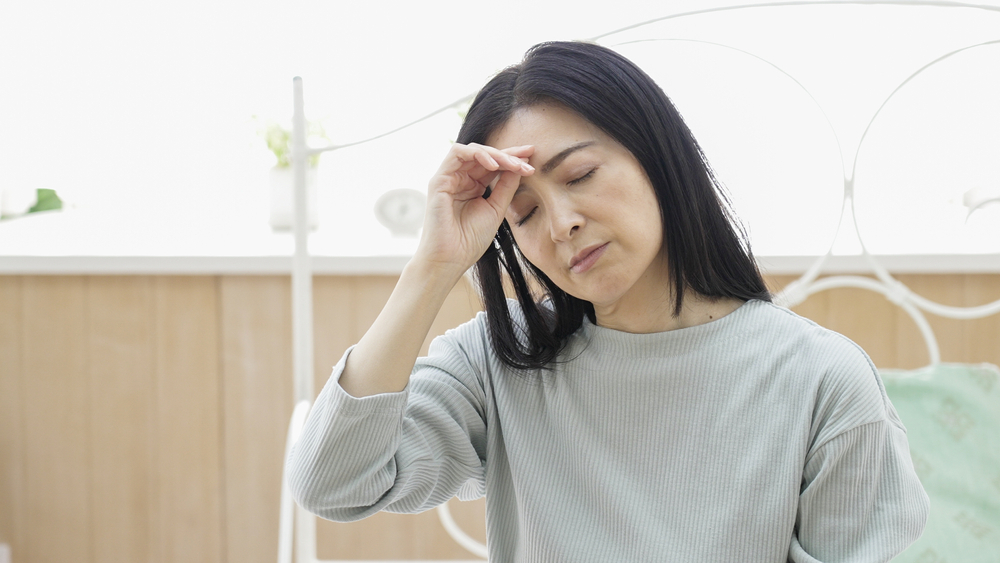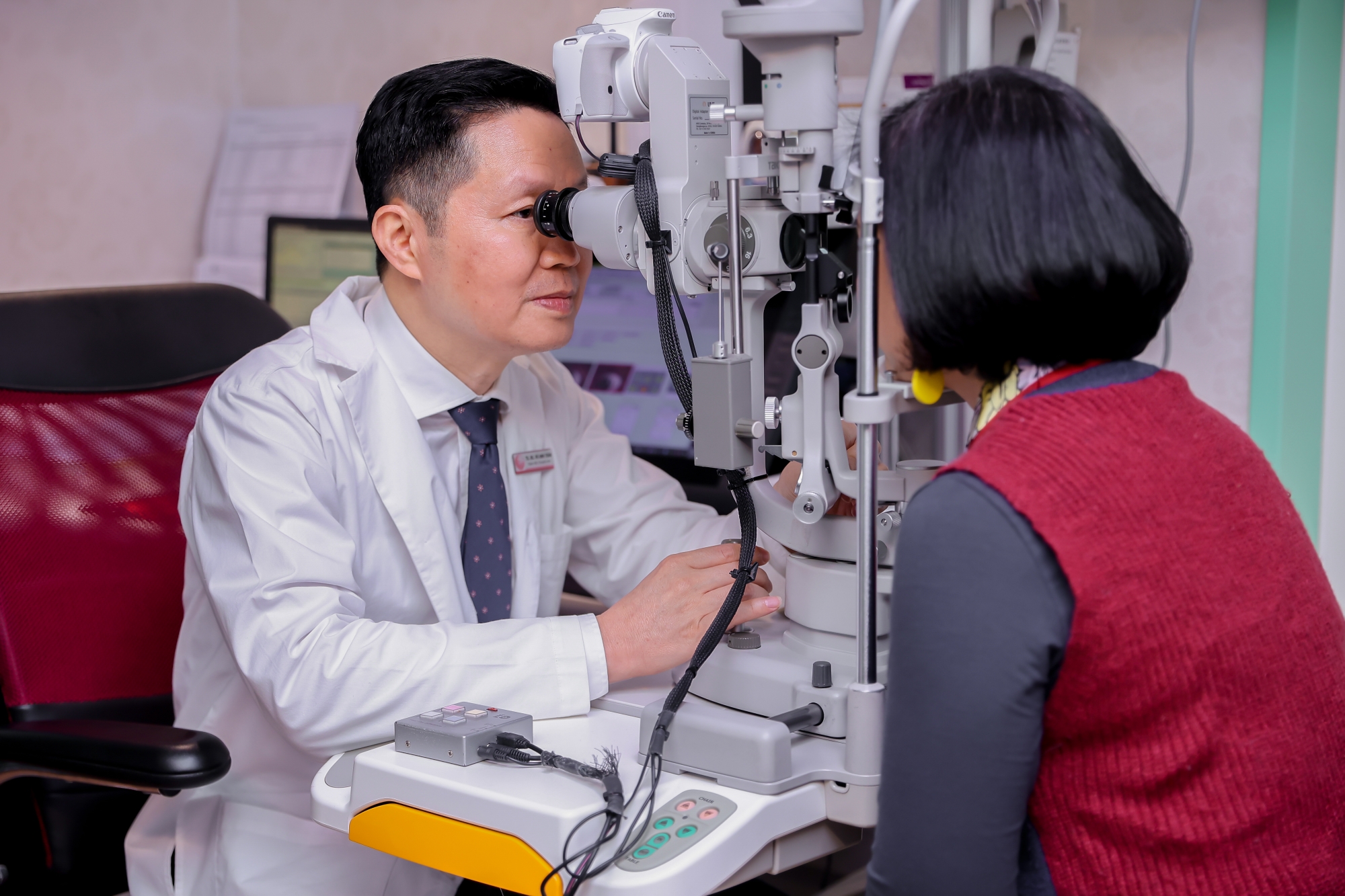Glaucoma is a group of eye conditions that cause damage to the optic nerve and loss of visual field. Glaucoma has been called the silent thief of sight, and it damages the eyes and resulting in blindness if not detected and treated promptly.
Who is at Risk?
- Those of over 40 years old
- Those with family members who have glaucoma
- Those with refractive errors: myopia over 4 diops, early presbyopia, presbyopia at quick progress.
- Those with systemic diseases such as high blood pressure, nocturnal blood pressure decline, mucosal spasm in coronary artery disease, Raynaud’s syndrome, cerebral circulation disorder, migraine, hyperlipidemia, diabetes, thyroid diseases

With each form of glaucoma, patients will experience different symptoms:
Acute angle-closure glaucoma: patients can feel symptoms such as sudden eye pain or headache, seeing rainbow-colored halos around bright lights, nausea or vomiting, sweating, red eyes, blurred vision (which can be like see through a fog, or even severe vision loss.) When patients touch their eyes, they migh feel the eyesballs are as tight as a marble.
Chronic glaucoma (chronic primary angle-closure glaucoma, primary angle-closure glaucoma without pupillary obstruction, primary open-angle glaucoma): is often painless, . the person affected is not aware they have it. Patients are only come to the doctor when vision is severely reduced or completely lost.
Depending on the form and stage of glaucoma, the patient will be appointed appropriate treatment methods.
1. Eyedrops and oral medication
- Eyedrops: Using eye drops to control glaucoma is one of the most common glaucoma treatments, especially in the treatment of open-angle glaucoma. Eye drops are used to help lower intraocular pressure by increasing the drainage of aqueous humor out of the eye or by decreasing the amount of aqueous humor produced. However, eye drops that lower eye pressure can cause some side effects such as eye irritation, stinging, redness, and dry eyes. Therefore, patients need to talk to their doctor if there are any problems while using the drug. In addition, patients also need to adhere to the correct dosage, arbitrarily stopping use without a doctor's prescription may affect the treatment results.
- Oral medications: Doctor may also prescribe an oral medication such as a beta-blocker or a carbonic anhydrase inhibitor. These medications help reduce fluid (water) secretions in the eye.
2. Laser and Surgery
In case the treatment of glaucoma by using medications does not achieve the desired effect, the doctor will appoint the patient to perform surgery or laser treatment. The purpose of these methods is to create an outlet for the aqueous humor, stabilizing the pressure in the eye. Depending on the condition as well as the disease, there will be different laser methods including:
- Trabeculectomy Surgery
- Deep Sclerectomy Surgery
- Cyclophotocoagulation Procedure
- Cyclocryotherapy Procedure
- Mini express shunt placement Surgery
The main goal of glaucoma treatment is to stop the disease from progressing and causing damage to the optic nerve. Glaucoma is a disease that cannot be completely cured, but most cases can be successfully controlled.

After laser treatment or surgery, patients need to strictly follow the follow-up schedule so that they can regularly monitor their vision and eye pressure. When seeing any abnormality, impaired vision, the patient should immediately go to the eye specialist facilities for timely intervention. Treatment follow-up is an important factor that greatly influences the final outcome. In many cases, although glaucoma was detected and treated, the patient thought that it was completely cured, so he did not go to the doctor for further follow-up, as a result, the disease continued to progress slowly leading to complete loss of vision. Therefore, patients need to follow periodical follow-up from the time of diagnosis, persist in lifelong treatment to control disease progression, and preserve their vision.
Glaucoma experts
The team of doctors at Japan International Eye Hospital are trained domestically and internationally, have many years of intensive research and practical experience in glaucoma treatment.
Dr. Dr. Vu Anh Tuan - one of the leading ophthalmologists in the field of glaucoma treatment in Vietnam. With more than 25 years of experience and extensive professional knowledge as a lecturer at Hanoi Medical University, Dr. Tuan has many important contributions to the field of ophthalmology in Vietnam. He also a Standing Committee member of the Vietnam Ophthalmology Association, General Secretary of the Vietnam Glaucoma Club and a member of the French Ophthalmology Association.
Modern equipment
- Contact and non-contact tonometry
- Humphrey Field Analyzer 3
- OCT Cirrus 6000
Quality medical supplies and surgical supplie
- Disposable surgical drapes
- Surgical blade, 100% new, one set for each patient.
- BSS fluid (Alcon – USA) containing Na, K, Cl, Mg, Ca similar to physiological fluids in the body, no preservatives
Great treatment plan
The strict pre- and post-operative examination and monitoring procedures according to Japanese standards help accurately assess the condition and progression of the disease. The treatment plan is well thought out to ensure maximum effectiveness.

